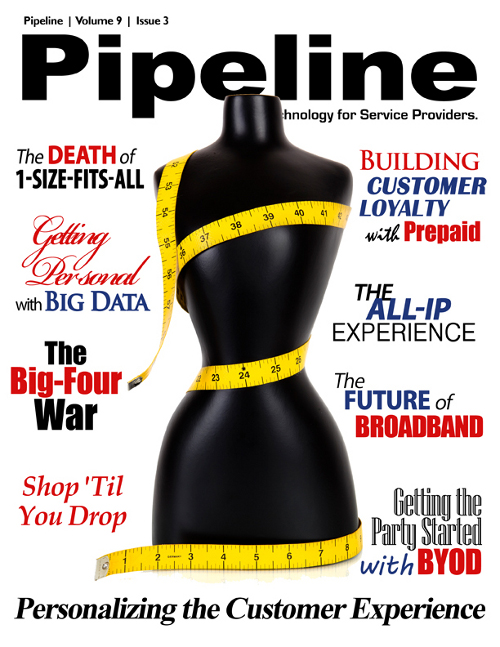The User-Managed, Usage-Based Future of Broadband
Usage data also serves as the foundation for effective traffic and congestion management.
For a given usage tier, subscriber usage can be continuously monitored and compared to allotted quota. As the subscriber approaches a usage tier threshold, the system can generate a notification
via email or SMS alerting the subscriber. When the usage threshold is exceeded, the system can take action to modify the subscriber's service by throttling the speed of the subscriber's
connection. At this point, the subscriber could have the option of topping-up their usage quota or permanently moving to a higher usage tier.
Traffic and Congestion Management
Usage data can also serve as the foundation for more effective traffic and congestion management. In broadband networks, most congestion and performance problems are manifested in the local
distribution network, so it's critical to have a fine-grained view of network performance down to the level of individual subscribers.
All broadband providers rely on statistical multiplexing to oversubscribe their networks, so there are going to be periods in the day when the network is under heavy load and congestion is
likely. However, with accurate and real-time visibility into subscriber usage, broadband providers can implement more sophisticated proactive and reactive traffic management schemes to both avoid
network congestion and manage it more effectively when it occurs.
Proactive traffic management ensures that usage conforms to a subscriber's service tier by imposing traffic management controls when a subscriber's usage exceeds certain thresholds as defined in
his/her service profile. A proactive traffic management approach continuously monitors a subscriber's usage over a sliding time window relative to a predefined service profile, and triggers the
application of policies to modify a subscriber's service level when certain usage thresholds are exceeded. These policies typically modify service speed and other QoS-related service parameters.
Reactive traffic management addresses congestion conditions that typically arise during busy hours, regardless of whether subscriber usage is currently in conformance. This approach detects
congestion by continuously monitoring network utilization and automatically taking action to reduce it when a certain threshold is exceeded. Before applying policies to impose traffic management,
this method first determines who the heaviest users are by accessing subscriber usage data, and then applies the appropriate policies to manage traffic for only the top users, who are having the
most impact on network performance.
This type of differentiated traffic management requires continuous monitoring of subscriber usage, but gives providers the ability to improve subscriber experience by dynamically modifying
service levels to ensure that subscribers receive their fair share of bandwidth for their service tier.
Empowering Subscribers with Dynamic, User-Managed Services
Another use for subscriber-centric usage data is to deliver a new generation of broadband services that allow subscribers to dynamically activate and control services via web-based portals, as
described above. In addition to providing subscribers with access to real-time information about their service usage, these portals can notify subscribers of usage-based service management or
traffic control actions, and allow them to activate or modify services, while conducting financial transactions via credit card merchant processing to pay for these on demand. For example, a
subscriber may decide to add capacity to his usage tier, or would like to move up to a higher tier, or may need to temporarily boost the speed of service. He could transact for these service
modifications in real-time using a credit card, leveraging the same merchant processing technologies used by popular websites such as iTunes and Amazon.



















